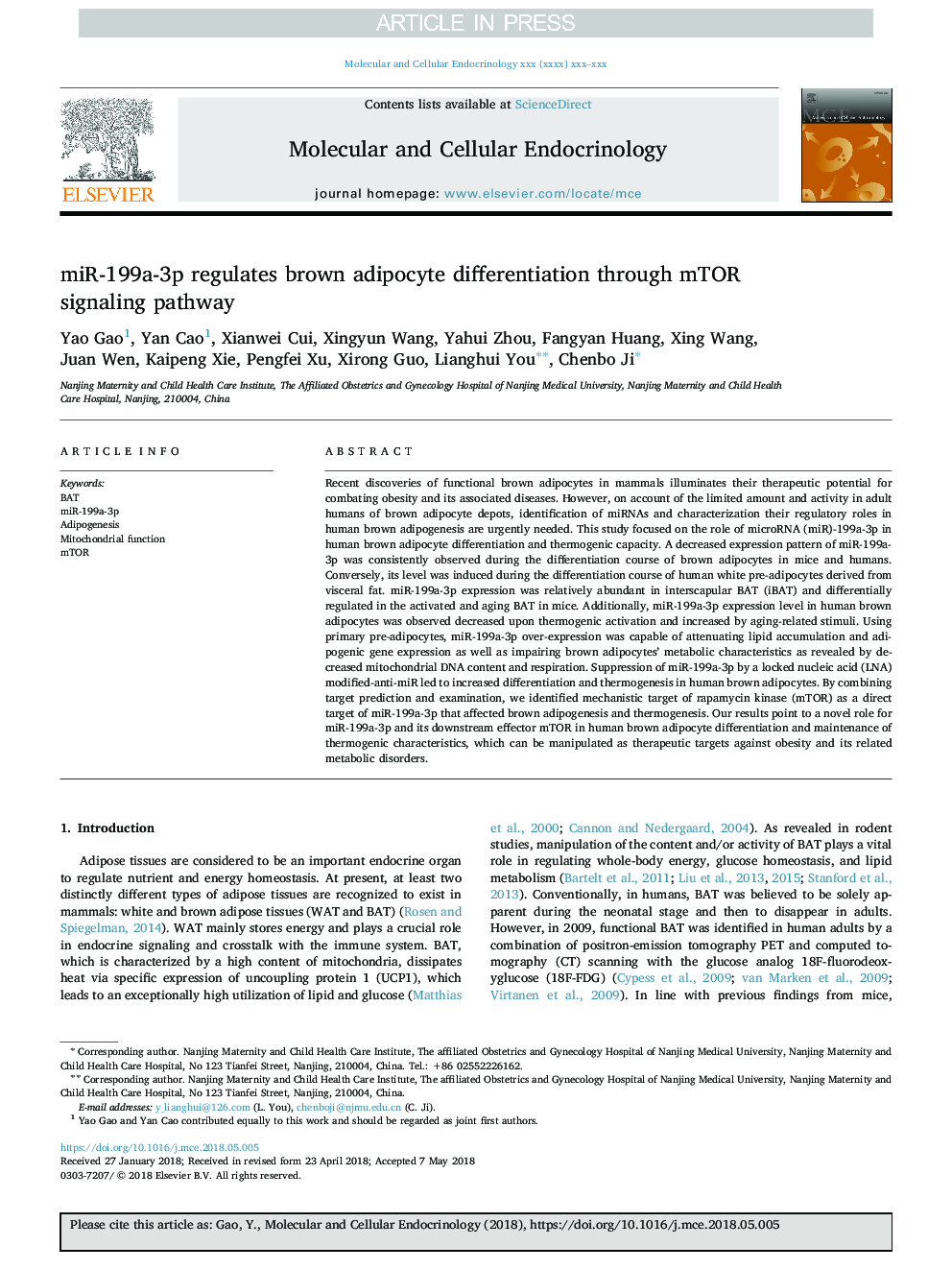| Article ID | Journal | Published Year | Pages | File Type |
|---|---|---|---|---|
| 8956335 | Molecular and Cellular Endocrinology | 2018 | 10 Pages |
Abstract
Recent discoveries of functional brown adipocytes in mammals illuminates their therapeutic potential for combating obesity and its associated diseases. However, on account of the limited amount and activity in adult humans of brown adipocyte depots, identification of miRNAs and characterization their regulatory roles in human brown adipogenesis are urgently needed. This study focused on the role of microRNA (miR)-199a-3p in human brown adipocyte differentiation and thermogenic capacity. A decreased expression pattern of miR-199a-3p was consistently observed during the differentiation course of brown adipocytes in mice and humans. Conversely, its level was induced during the differentiation course of human white pre-adipocytes derived from visceral fat. miR-199a-3p expression was relatively abundant in interscapular BAT (iBAT) and differentially regulated in the activated and aging BAT in mice. Additionally, miR-199a-3p expression level in human brown adipocytes was observed decreased upon thermogenic activation and increased by aging-related stimuli. Using primary pre-adipocytes, miR-199a-3p over-expression was capable of attenuating lipid accumulation and adipogenic gene expression as well as impairing brown adipocytes' metabolic characteristics as revealed by decreased mitochondrial DNA content and respiration. Suppression of miR-199a-3p by a locked nucleic acid (LNA) modified-anti-miR led to increased differentiation and thermogenesis in human brown adipocytes. By combining target prediction and examination, we identified mechanistic target of rapamycin kinase (mTOR) as a direct target of miR-199a-3p that affected brown adipogenesis and thermogenesis. Our results point to a novel role for miR-199a-3p and its downstream effector mTOR in human brown adipocyte differentiation and maintenance of thermogenic characteristics, which can be manipulated as therapeutic targets against obesity and its related metabolic disorders.
Related Topics
Life Sciences
Biochemistry, Genetics and Molecular Biology
Cell Biology
Authors
Yao Gao, Yan Cao, Xianwei Cui, Xingyun Wang, Yahui Zhou, Fangyan Huang, Xing Wang, Juan Wen, Kaipeng Xie, Pengfei Xu, Xirong Guo, Lianghui You, Chenbo Ji,
